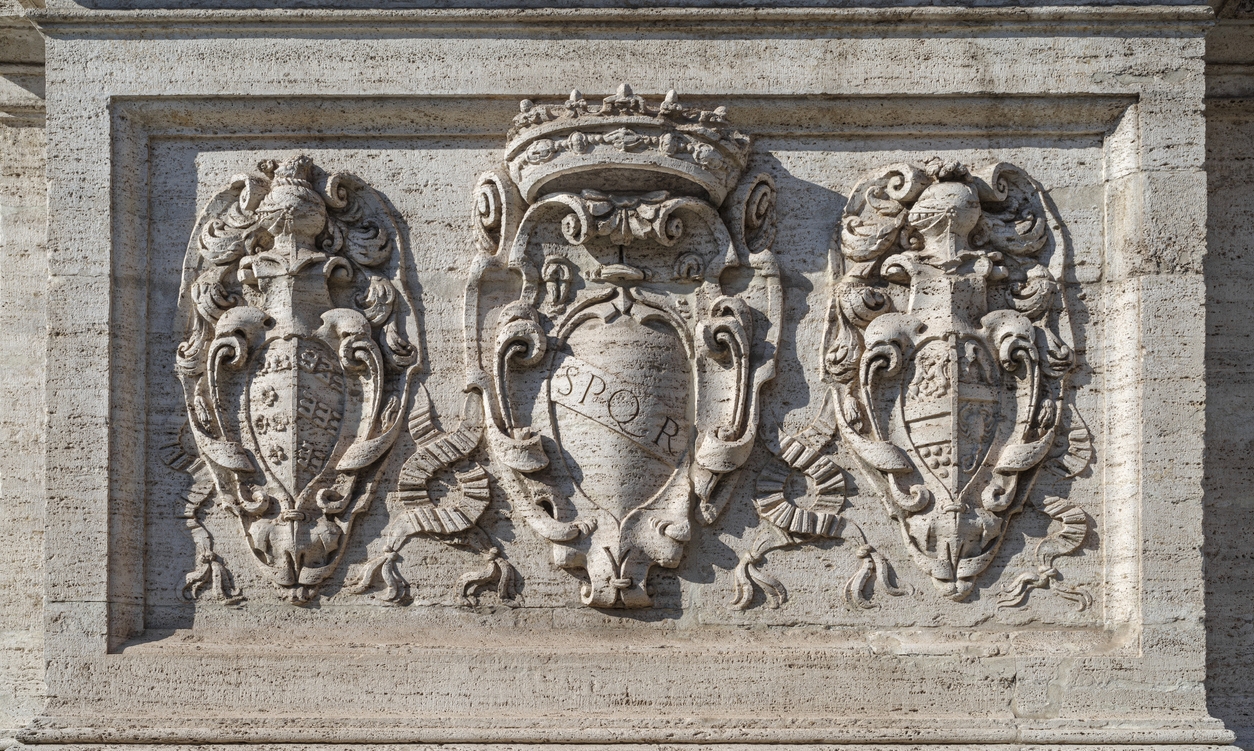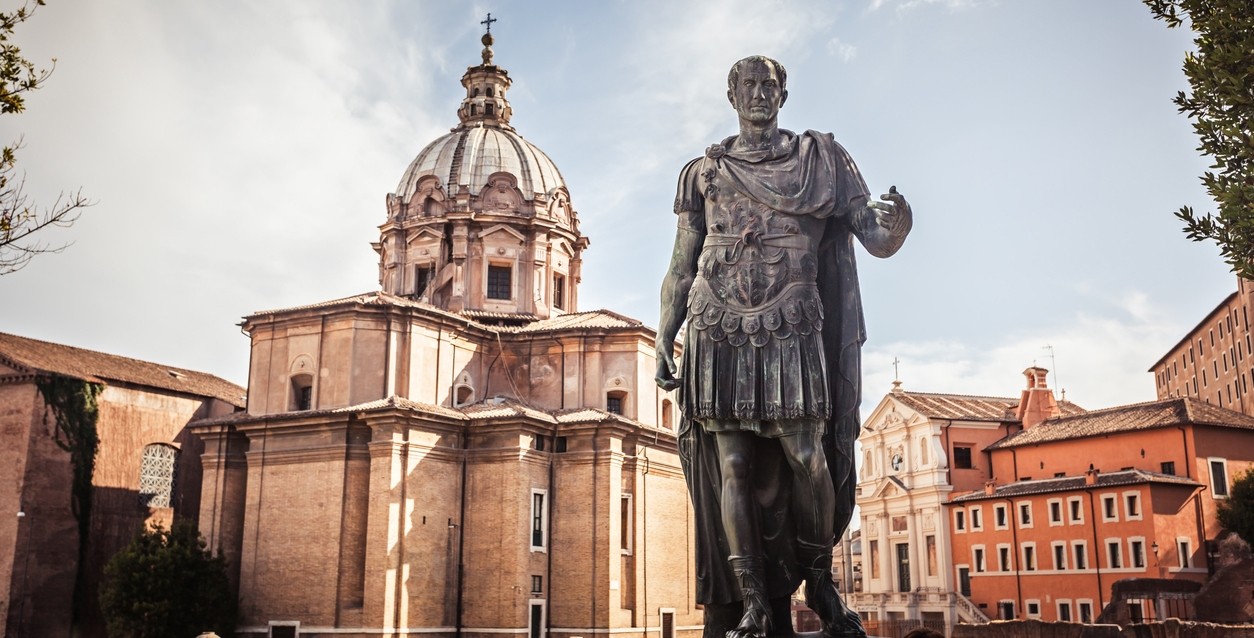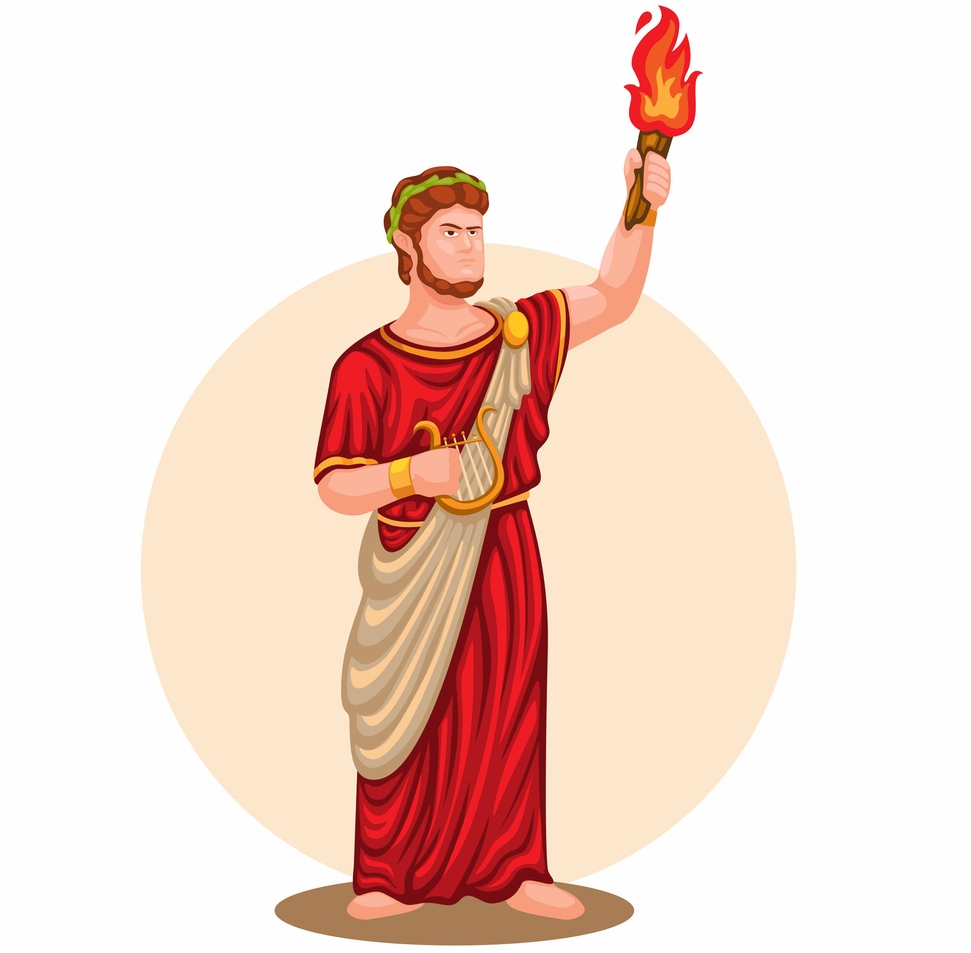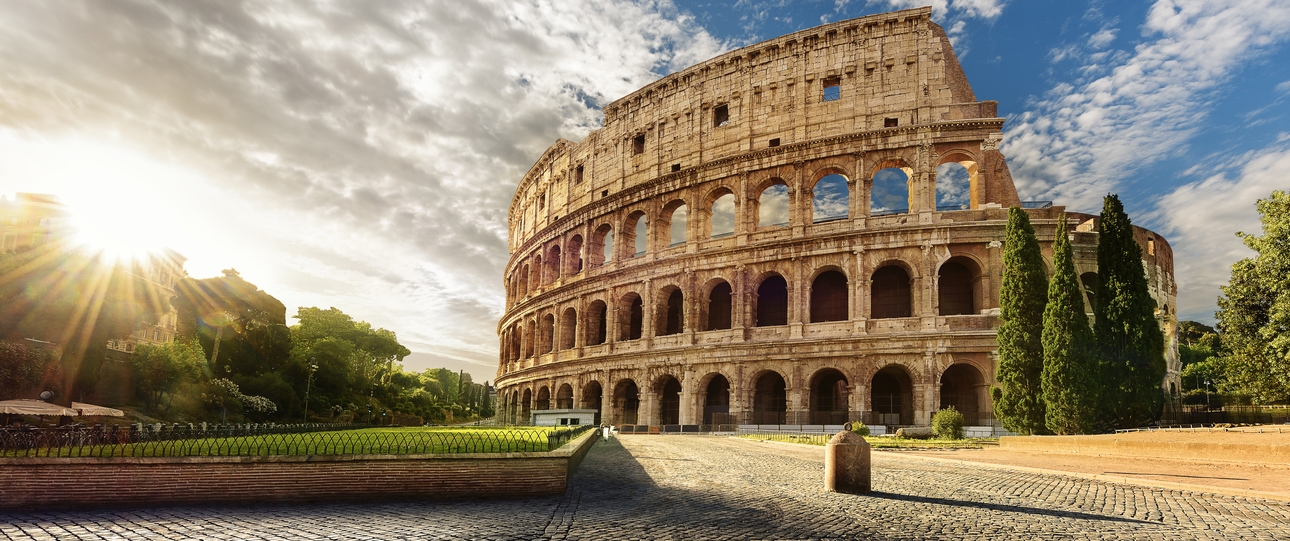Table of Contents
Background
In history, Rome must be considered one of the most successful imperial powers. In the progression of centuries, Rome grew from a small town on the Tiber in central Italy into a gigantic kingdom that eventually comprised England, all of mainland Europe west of the Rhine and south of the Danube, the majority of Asia west of the Euphrates, northern Africa, and the isles of the Mediterranean. However, ancient Romans were different from the ancient Greeks, who excelled in intellectual and artistic endeavors, as they achieved greatness in their military, political, and social institutions.
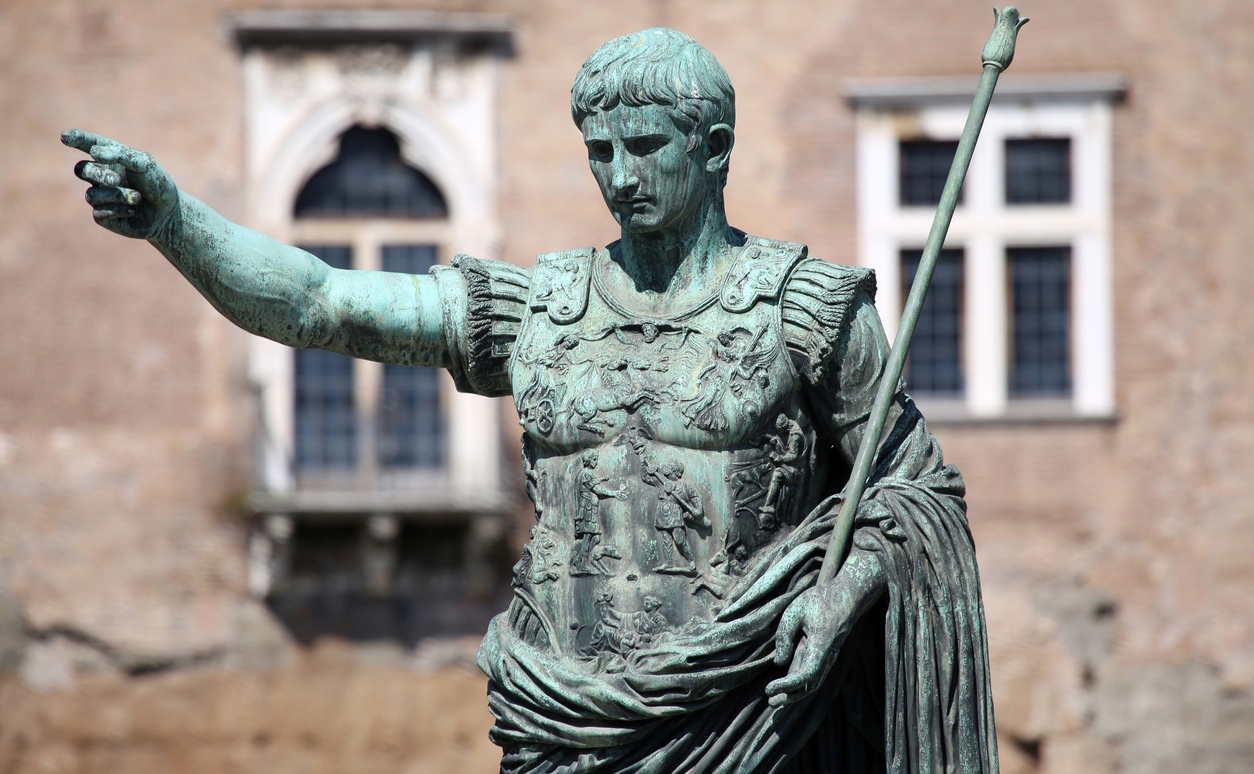
statue of Caesar Augustus
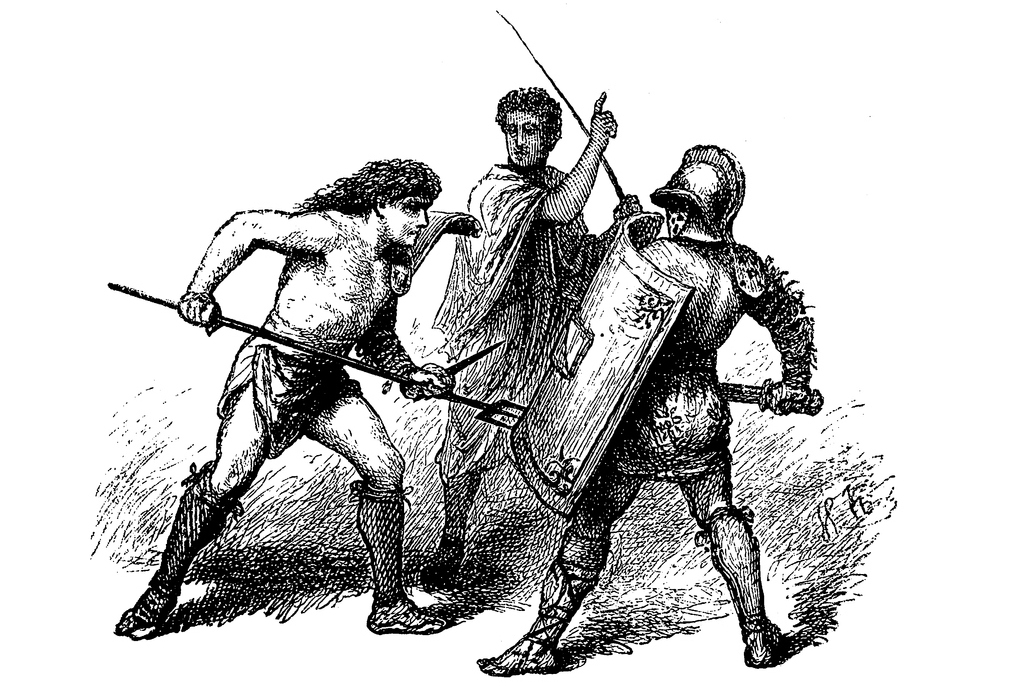
ancient Roman military

a graphic art of ancient Rome and Romans
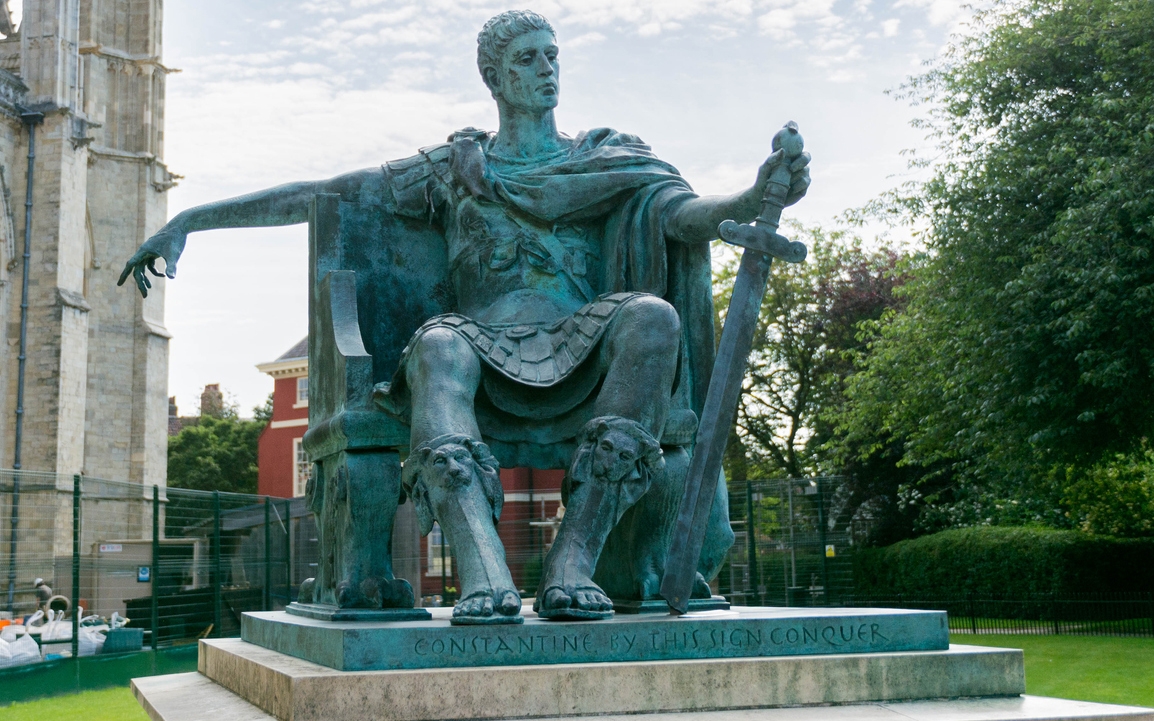
statue of emperor Constantine
Included in the many legacies of Roman dominance is the widespread use of the Romance languages, such as Italian, Spanish, French, Romanian, and Portuguese, which were all derived from Latin. Aside from that, they also started the use of the contemporary Western alphabet and calendar and the rise of Christianity as a primary religion in the world. From the rise and fall of Julius Caesar to the long and triumphant reign of Augustus, Rome’s first emperor, it experienced a golden age of peace and prosperity. However, all things come to an end, and the decline and fall of the Roman Empire became one of the most dramatic collapses in the history of human civilization. [2]
How do you think ancient Rome came to be, and how did it end? If you want to learn more about it, you’re in the right place. In this post, we are giving you a timeline of ancient Rome.
The Origins of Rome
According to legends, Rome was founded by Romulus and Remus, the twin sons of Mars, the god of war, in 753 B.C. They were left to drown in a basket on the Tiber River by a king of nearby Alba Longa and were saved by a she-wolf. The twins survived to defeat that king and found their own city on the river’s banks in the said year. Romulus murdered his brother and became Rome’s first king, which is named after him.
A non-hereditary succession of kings followed after him, which were a line of Sabine, Latin, and Etruscan or earlier Italian civilizations. Rome had seven legendary kings, namely Romulus, Numa Pompilius, Tullus Hostilius, Ancus Martius, Lucius Tarquinius Priscus, or Tarquin the Elder, Servius Tullius, and Tarquinius Superbus or Tarquin the Proud. They reigned from 534 to 510 B.C. Even though they were referred to as kings, all of the kings after Romulus were elected by the Senate. [2]
The era of Rome as a monarchy ended in 509 B.C. with the takeover of its seventh king, Lucius Tarquinius Superbus. According to historians, he was cruel and oppressive compared to his compassionate predecessors. There was a popular uprising that was said to have arisen over the rape of a virtuous noblewoman named Lucretia by the son of the king. Whatever the cause, Rome turned into a republic from a monarchy. It was a world derived from res publica or property of the people. Rome was created on seven hills, which was known as “the seven hills of Rome.” These include Equiline Hill, Palatine Hill, Quirinal Hill, Aventine Hill, Caelian Hill, Capitoline Hill, and Viminal Hill. [2]
The Early Republic
One predominant modern view is that the monarchy in Rome was incidentally terminated through military defeat and foreign intervention. This theory views Rome as a site highly prized by the Etruscans of the 6th century B.C., who are popular to have extended their power and impact at the time across the Tiber into Latium and even past south into Campania. On the way to the end of the 6th century, Rome may have been involved in a war against King Porsenna of Clusium, who defeated the Romans, seized the city, and expelled its last king.[1]
The influence of the monarch passed to two yearly voted law lords referred to as consuls. They also served as commanders-in-chief of the army. Even though the law lords were chosen by the people, they were drawn mostly from the Senate, which was dominated by the nobles or the children of the original senators from the time of Romulus.
In the early republic, politics was marked by the long struggle between patricians and plebians, who sooner or later got some political power through years of concessions from patricians, which included their own political bodies referred to as the tribunes, which could initiate or veto legislation. [2]
The first Roman law code was adorned on 12 bronze tablets in 450 B.C. These were known as the Twelve Tables, which were displayed publicly in the Roman Forum. These laws comprised issues of legal procedure, civil rights, and property rights. They also provided the basis for all the future Roman civil law. Actual political power in Rome was positioned in the Senate around 300 B.C., which at the time encompassed only members of patrician and rich plebeian families. [2]
Military Expansion
The Roman state rose exponentially in both size and power during the early republic. In 390 B.C., the Gauls sacked and burned Rome. However, even though that happened, the Romans rebounded under the leadership of the military hero Camillus. By 264 B.C., he eventually gained control of the whole Italian peninsula. After that, Rome fought a series of wars, which were known as the Punic Wars with Carthage, which was a powerful city-state located in northern Africa. The first two Punic Wars concluded with Rome having full control of Sicily, along with the western Mediterranean and much of Spain.
From 149 to 146 B.C., the Third Punic War occurred. The city of Carthage was captured and destroyed by the Romans, and they sold its surviving inhabitants as slaves, making a section of northern Africa a Roman province. Simultaneously, Rome also spread its influence east, defeating King Philip V of Macedonia in the Macedonian Wars, which turned his kingdom into another Roman province.
The military conquests of Rome led directly to its cultural growth as a society because the Romans profited greatly from contact with such advanced cultures as the Greeks. Around 240 B.C., the first Roman literature appeared, with translations of Greek classics into Latin. Eventually, Romans adopted much of Greek art, philosophy, and religion. [2]
Conflicts in the Late Republic
Under the weight of the growing empire, the complex political institutions of Rome started to crumble, steering to an era of internal chaos and violence. As well-off landowners drove small farmers from public land, the gap between rich and poor widened, while access to government was more and more limited to the more privileged classes. Efforts to address these social issues, including the reform movements of Tiberius and Gaius Gracchus, ended in the death of the reformers at the hands of their opponents.
Gaius Marius, a commoner whose military competence raised him to the position of consul in 107 B.C., was the first of a succession of warlords who would rule Rome during the late republic. Marius struggled against attacks by his opponents in 91 B.C., including his fellow general Sulla, who arose as a military dictator around 82 B.C. When Sulla retired, Pompey, one of his former supporters, briefly served as consul before conducting successful military campaigns in contradiction of pirates in the Mediterranean and the forces of Mithridates in Asia. In the same period, Marcus Tullius Cicero, who was voted consul in 63 B.C., overpowered the conspiracy of the patrician Cataline and earned a status as one of Rome’s greatest orators. [2]
The Rise of Julius Caesar
When Pompey went back to Rome, he created an uneasy alliance known as the First Triumvirate with the rich Marcus Licinius Crassus and another rising star in Roman politics named Gaius Julius Caesar. After achieving military glory in Spain, Julius Caesar went back to Rome to contest for the consulship in 59 B.C. Caesar received the governorship of three rich provinces in Gaul from 58 B.C., from his alliance with Pompey and Crassus. After that, he set about conquering the rest of the region for Rome.
In 54 B.C. after the death of Pompey’s wife Julia, who was Caesar’s daughter, Crassus was killed in a battle against Parthia, or what we know today as Iran, the following year. With that, the triumvirate was broken. In 53 B.C., with old-style Roman politics in disorder, Pompey stepped in as sole consul. The military glory of Caesar in Gaul and his growing wealth had eclipsed Pompey’s, and the latter teamed with his Senate allies to undermine Caesar steadily.
Caesar, along with one of his legions, crossed the Rubicon in 49 B.C. It was a river on the border between Italy from Cisalpine Gaul. In 45 B.C., a civil war was started with the invasion of Caesar in Italy, in which he emerged as dictator of Rome for life.
The Transition from Caesar to Augustus
A year later, Julius Caesar was killed on the ides of March or March 15, 44 B.C., by an assembly of his enemies, which was led by the republican nobles Gaius Cassius and Marcus Junius Brutus. Consul Mark Antony and Octavian, the great-nephew and adopted heir of Caesar, joined forces to crush Cassius and Brutus and divided power in Rome with ex-consul Lepidus in what was known as the Second Triumvirate.
By 36 B.C., with Octavian leading the western provinces, Antony in the east, and Lepidus in Africa, tensions started to develop, and the triumvirate soon dissolved. Octavian triumphed over the forces of Antony and Queen Cleopatra of Egypt in 31 B.C in the Battle of Actium. Antony and Cleopatra committed suicide in the wake of the devastating defeat.
Octavian was the sole leader of Rome by 29 B.C., along with all its provinces. To prevent having the same fate as Caesar, he ensured to make his position as absolute ruler acceptable to the public through the restoration of the political institutions of the Roman republic, while in reality, he was retaining all real power for himself. In 27 B.C., Octavian acquired the Augustus title, becoming the first emperor of Rome. [2]
The Roman Emperors
The rule of Augustus restored morale in Rome after a century of discord and corruption. He also ushered in the popular pax Romana, which was two whole centuries of peace and prosperity. Various social reforms were instituted, he won many military victories, and he allowed Roman literature, art, religion, and architecture to flourish. For 56 years, Augustus ruled, supported by his great army and by a growing cult of devotion to the emperor. The Senate elevated Augustus to the status of a god when he died. This started a long-running tradition of deification for famous emperors. [2]
The dynasty of Augustus included the detested Tiberius (14-37 A.D.), the ferocious and unstable Caligula (37-41 A.D.), and Claudius (41-54 A.D.), who was remembered for the conquest of his army of Britain. The line finished with Nero (54-68 A.D.), whose extremes exhausted the Roman treasury and led to his collapse and eventual suicide.
After the death of Nero, there were four emperors that took the authority. The fourth was Vespasian (69-79 A.D.) and his heirs, Titus and Domitian, who were known as the Flavians. They tried to anger the excesses of the Roman court, reinstate Senate authority, and endorse public welfare. The people’s commitment was received by Titus (79-81 A.D.) with his management of recovery efforts after the notorious eruption of Vesuvius, which devastated the towns of Herculaneum and Pompeii. [2]
Another golden age in Roman history began with the reign of Nerva (96-98 A.D.), who was chosen by the Senate to succeed Domitian. During this time, four emperors, namely Trajan, Hadrian, Antoninus Pius, and Marcus Aurelius, took the throne peaceably, succeeding one another by adoption instead of hereditary succession. The borders of Rome were expanded by Trajan (98-117 A.D.) to the greatest extent in history with triumphs over the kingdoms of Dacia, which is now known as northwestern Romania, and Parthia.
The empire’s frontiers were solidified by Hadrian (117-138 A.D.). He built Hadrian’s Wall in present-day England and continued the work of his forerunner of founding internal stability and introducing administrative improvements. Rome continued in peace and prosperity under Antoninus Pius (138-161 A.D.). However, when Marcus Aurelius (161-180 A.D.) started his reign, it was dominated by conflict, which included the war between Parthia and Armenia and the invasion of Germanic tribes from the north. When he died near the battlefield at Vindobona (Vienna), he broke with the tradition of non-hereditary succession as he named his son Commodus as his successor. [2]
The Deterioration and Collapse of the Emperors
Commodus (180-192 A.D.) was corrupt and incompetent, and had brought the golden age of the Roman emperors to a disappointing end. He died in the hands of his own ministers, which started another period of civil war, wherein Lucius Septimius Severus (193-211 A.D.) emerged triumphant.
In the 3rd century, Rome grieved from a cycle of near-constant struggle. There were 22 emperors who took the throne, and the majority of them met violent ends at the hands of the same militaries who had pushed them to power. In the interim, threats from outside beleaguered the empire and exhausted its riches, which included the unceasing violence from Parthians and Germans and attacks by the Goths over the Aegean Sea.
Peace was temporarily restored in Rome with the reign of Diocletian (284-305 B.C.), but at a high cost to the harmony of the empire. He divided power into the tetrarchy or rule of four, sharing his title of Augustus (emperor) with Maximian. Two generals, Galerius and Constantius, were selected as the assistants and chosen heirs of Diocletian and Maximian. They ruled the eastern Roman Empire, while Maximian and Constantius controlled the west. [2]
When Diocletian and Maximian retired from office, the solidity of the system suffered significantly. In 324 A.D., Constantine, the son of Constantius, arose from the succeeding power fights as a single emperor of a reunited Rome. The Roman capital was moved to the Greek city of Byzantium, and he renamed it Constantinople. In 325 B.C., at the Council of Nicaea, Constantine made Christianity the official religion of Rome, which was once an obscure Jewish sect.
Roman unity under Constantine proved deceptive, and 30 years after his death, the eastern and western empires were again divided. Despite the continuing battle against Persian forces, the eastern Roman Empire, which was known as the Byzantine Empire, remained largely whole for centuries. However, a different story played out in the west, where the empire was bust-up by internal conflict and terrorization from abroad, specifically from the Germanic tribes that were established within the borders of the empire, including the Vandals. Their sack of Rome started the phrase “vandalism.” The west increasingly lost money due to the continuous warfare.
Under the weight of its own overstuffed empire, Rome collapsed. It lost its provinces one by one. Around 410 A.D., it lost Britain and was followed by Spain and north Africa by 430 A.D. Around 450 A.D., Attila, along with his brutal Huns, conquered Gaul and Italy, which further shook the foundations of the empire.
A German Goth named Odoacer won control of the Roman army in Italy. In 476 A.D., after the last western emperor, Romulus Augustus was overthrown, the troops of Odoacer proclaimed him king of Italy, bringing a dishonorable end to the long, tumultuous history of ancient Rome. After that, the fall of the Roman Empire was complete. [2]
Architecture in Ancient Rome
The architecture and engineering in ancient Rome have had a lasting impact on the modern world. In 312 B.C., the first aqueducts were constructed, which enabled the rise of cities by transporting water to urban areas, improving sanitation and public health. Roman cement and concrete are part of the reason ancient buildings such as the Roman Forum and the Colosseum are still standing up strong at the present time. Roman arches improved upon earlier arches to create strong bridges and buildings, distributing weight evenly throughout the structure.
In addition to that, Roman roads, which were the most advanced roads in the ancient world, allowed the Roman Empire, which was more than 1.7 million square miles, to stay connected. These roads included modern-seeming innovations, such as drainage and mile markers. More than 50,000 miles of road were created by 200 B.C., and some are still in use today. [2]
References
[1] Forsythe, G. E. (2021, September 15). Rome’s foundation myth. Encyclopædia Britannica. Retrieved July 5, 2022, from https://www.britannica.com/place/ancient-Rome/Romes-foundation-myth
[2] History.com, E. (2009, October 14). Ancient Rome. History.com. Retrieved July 5, 2022, from https://www.history.com/topics/ancient-rome/ancient-rome
[3] World History Encyclopedia. (n.d.). Rome timeline. World History Encyclopedia RSS. Retrieved July 8, 2022, from https://www.worldhistory.org/timeline/Rome/
[4] Ducksters.com. (2022). Ancient rome. Ducksters. Retrieved July 8, 2022, from https://www.ducksters.com/history/ancient_rome_timeline.php



